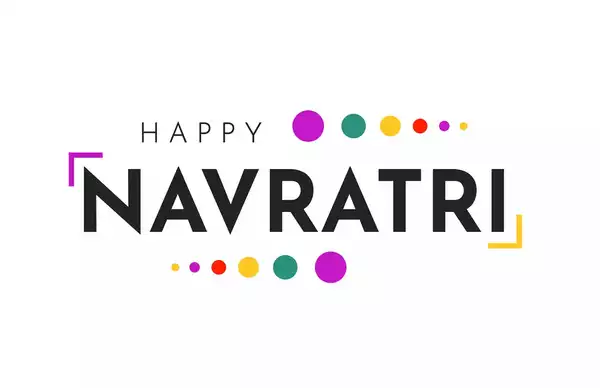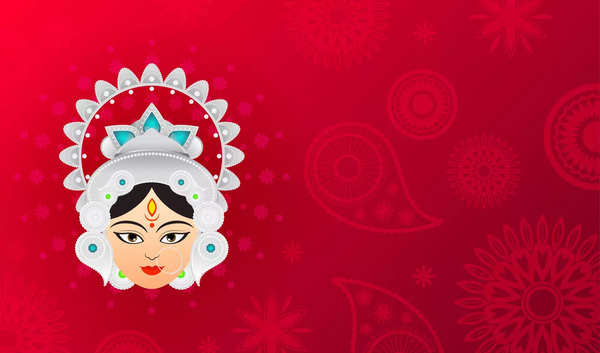It’s that time of the year, when we get together to revere goddess Durga. Navratri is one of the most celebrated festivals in India. It celebrates the rich colours of joy, and dedicated to the worship of goddess Durga. The excitement and devotion with which it is celebrated every year come together on the last day of Dussehra. This festival lasts for nine nights, each night being distinct from the others in its celebration of a different form of the goddess, and every day holds importance and its own colour.Shardiya Navratri begins from 03 October to 12 October in the year 2024. Below is the detailed colour scheme along with meanings for the colors of Navratri 2024. Have a graceful time celebrating this festival with style and love.

Day 1: Yellow
First day of Navratri Shailputri The goddess of mountains Yellow is synonymous with happiness, brightness, and being positive. That is something which everyone likes to present or wear on the first day of Navratri- the encouragement of a spirit that brings joy and enlightenment. It represents the start of the festival and good new energy.
See more: Navratri Colours 2024 | 9 Navratri Colors Full List: Nine colours of Navratri and their significance
Tips for celebrating: On the second day, do all your dressing in yellow. Be it traditional sari or lehenga, even casual wear, take it as a colour to don. Decorate yellow flowers inside your house for a lively setting.
Day 2: Green
Bramhchawarini is the day of worship on the second day. It shows knowledge and wisdom. Green is the symbol of nature, fertility, and prosperity. So, green gives your aura a shine and welcomes the good vibes for success in life.
How to celebrate it: You can do anything that has shades of green on the body. You can decorate your home with plants and greenery to show growth and rebirth. Wearing green bangles or dupattas will also do.
See more: Navratri 2024: Essential bhog for all 9 avatars of Goddess Durga to make your pooja fruitful
Day 3: Grey
Worshipping the third day on Sunday, devotees worship Chandraghanta who is deified as goddess of beauty and courage. The colour grey is neutral. It is a strong color where it depicts power, strength and stability which sounds like mighty fierce essence of Chandraghanta.
Some tips to celebrate, wear something with a lot of greyish tones. grey kurta or sari would be great. Grey made from pillar candles or cushions that emit subtle balance ambiance around.
Read more: Navratri 2024: Fasting rules to follow and what to eat and avoid during the 9-day festival

Day 4: Orange
Kushmanda is the fourth day celebration and represents energy and creativity. Orange is a bright and energy-filled colour. This represents eagerness and warmth, which is really apt for the festive season.
Wear anything orange or add some orange accessories: like glittering armbands or bright-coloured bangles. Decorate your home with marigold flowers, or some kind of decorations based on orange colour-theming, which will improve the festive spirit.
Day 5: White
Day 5 is dedicated to Skandamata, who is the mother of Kartikeya. White is symbolic of purity and peace and is related to harmony. It represents the qualities of the good mother and calls for peace during the festival.
Celebration ideas: Wear an ethereal white sari or dress as a symbol of purity. Light white candles in your home. This will make the surroundings even more soothing and forward-looking for the cause of peace.
Day 6: Red
On the sixth day, devotees revere Katyayani, which is the epitome of strength and chivalry. Red is the colour of power, passion, and love. One is believed to take in the energetic power of the goddess along with her armours by dressing in red clothes on this day.
Tips for celebration: Brilliantly red-coloured clothes will find its mark. One can use red flowers, such as roses or hibiscus, to decorate and offer; the theme here is that of strength and devotion.
Day 7: Royal blue
Mahagauri is the seventh day of the week and is the goddess personifying purity and serenity. Royal blue is a colour that depicts depth, trust, and tranquility. It is aligned with the nature of Mahagauri, which promotes peace and balance.
Ideas for celebrating: Add royal blue to your wardrobe with classy items that symbolize innocence. Decorate your place with colours of blue, such as tablecloths or even hangings on the wall, so it feels soothing and gentle.
Day 8: Pink
The eighth day is dedicated to Sidhidatri who provides the spiritual powers and enlightenment. Pink is the colour of love and love with affection. Wearing anything pink on this day augments the love feel and positivity with it because it is the nurturing spirit of the goddess.
How to celebrate: Wear soft-pink clothing or wear pink accessories. Use pink flowers in your home decor so that it warmly invites people into it.
Puja Banerjee On Playing Goddess Lakshmi, Balancing Motherhood, Preparation For Durga Puja & More
Day 9: Lavender
It is the day of Goddess Durga, who is the personification of power and strength. It is also a symbol of spirituality, luxury, and ambition. It is the colour of appeal for connection with the divine forces and shows the depth of the spirit.
Celebrate the event by dressing in a vibrant purple dress or use it as an embellishment to your attires. Use purple lights or purple decorations in your home to celebrate the presence of the almighty goddess.

Importance of Navratri colours
The colours are an integral part of the festival, with each color marking a different aspect of divine feminine energy. Coloured wearables mark the expressions of reverence toward the goddess energy and a prayer for their blessing in the qualities portrayed by each colour. The rich tapestry is a representative of the vibrancy which adds on to the festivity and enables one to bond better with the spirit behind the festival.
Navratri is always a festival full of fun, pure devotion, and a sense of establishing a connection with the divine forces. Including those particular colours for every day in the apparel and decorations can lend your experience of this beautiful festival an enhanced flavor. Through traditional outfits or simple decorative items, each colour invites one into reflection over the qualities of the goddess while encouraging better knowledge of self and the world.
Navratri festival allows the women to wear very vibrantly coloured and traditionally themed clothing. Colourful lehengas and saris, coupled with anarkali suits-these all wear intricate embroidery and embellishments. Ghagras paired with cholis are also popular, as these allow for movement during traditional Garba dances.
The festival is known for bright colours so one can try experimenting with such colors. A pretty bangle, jhumkas, and maang tikka add beauty to this festival look. Comfortable yet stylish footwear in the form of traditional juttis or other embellished sandals is ideal for dancing in the festival. One can also wear dupattas, which will show off the elegant style and can be done in multiple styles that would reflect the rich cultural heritage of Navratri.
As we wait for the dawns of Navratri 2024 to set in, let the vibrant shades bring vibrancy and gaiety, positivity, and devotion into your life. Live this festival spirit, pay respects to the goddess, and take all these colours along as you step through this kaleidoscope of faith and celebration!
- What is the duration of Navratri?
Shardiya Navratri is a nine-night festival that falls between mid-September and mid-October in the lunar month of Ashwin. It ends with Dussehra, or Vijayadashami, as a celebration for the triumph of Lord Rama over the demon king Ravana. - What are the names of the goddesses worshipped during this period?
Navratri is one of the most important festivals dedicated to the worship of various goddess forms. These are Nine forms of Durga, or Navadurga. These include Shailaputri, Brahmacharini, Chandraghanta, Kushmanda, Skandamata, Katyayani, Kalaratri, Mahagauri, and Siddhidatri. - What are the cultural variations?
The festival is celebrated with unique customs in different regions across India. For instance, the Garba and Dandiya dances are conducted in Gujarat while in West Bengal, elaborate Durga Puja celebrations take place. - What is a Navratri fast?
During the nine days, most devotees fast and intake very selective food items, including fruits and specific grains. Prayers, bhajans, and kirtans are a part of it, but elaborate pujas for goddess Durga are also included. - What is the colour symbolism?
Each day of Navratri is paired with a specific colour, which denotes a specific aspect of the goddess. The devotees performing their pujas in such colourful attire mean wearing robes symbolizing different virtues and qualities, thereby amplifying the festive spirit.






